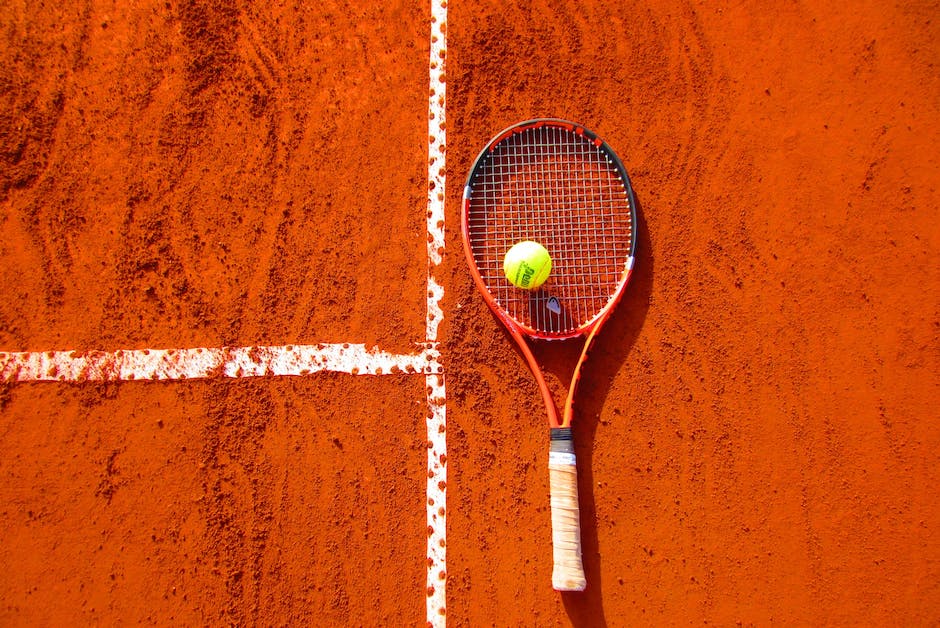
The Origin of Tennis Scoring System
Delving into the question, “how did tennis scoring originate?” we quickly realize that history has not kept a detailed record. The scoring system of the tennis match illustrates the quirky charm of the sport, but why the sport’s score jumps from 15 to 30, and then to 40 remains one of its most puzzling traits.
The answer partially lies in our clock. The long-held theory revolves around the clock face, segmented into quarter hours. When a player wins a rally, he/she was credited with a quarter hour, or 15 minutes. Following the same logic, the scores lined up 15, 30, and 45.
The Transition from 45 to 40 in Tennis Scoring
The score 45 to 40, nonetheless, took the game quarter-hour closer to victory, implying a virtually endless game. So, a highly logical explanation for 40 instead of 45 is to facilitate faster game resolution by placing the score closer to 50, the half-hour mark.
This most likely became codified as part of the tennis scoring system only when clocks became a common household item, which was thousands of years after the game’s inception. Hence the origins are not easy to trace.

Jeu De Paume and Its Influence on Tennis Scoring
The game of jeu de paume, a precursor to modern tennis, provides the most plausible hint towards this mystery. The French game of “jeu de paume”, meaning “game of the palm”, involved smacking a ball against a wall using the hand.
Jeu de paume courts were typically about 15 feet wide. When a player wins a point, they moved 15 feet closer to the net. This resulted in the player’s location on the court corresponding to their scoring points: 15, 30, and 45, later changed to 40.

The United States and the Advent of Modern Tennis Scoring
In the mid-19th century, when the game crossed the English Channel and reached the United States, it was streamlined and modified into the modern game we recognize today. The ambiguous use of the term ‘tennis’ until then, referring to any ball game played on an open field, morphed into the solitary game of lawn tennis in the US.
During this transformation, the scoring system, too, underwent changes, principally to allow faster resolution of games. The ’45’ from the jeu de paume game was changed to ’40’ in the new tennis scoring system.

The Intricacy of How Tennis is Scored
People around the world have posed the question, “how is tennis scored?” At the start of a tennis match, a player starts with zero points, or “love”. The term ‘called love‘ has a fascinating backstory too. Some argue it’s a corruption of the French word “l’oeuf”, meaning egg, which resembles a zero.
Alternatively, a player with zero points is said to still have “love for the game”. As this player gains points, the points are counted in a sequence of 15, 30, and 40.

Delight in the Game: Tennis Players and Scoring
Tennis players, whether professional or amateur, play the game, but many know very little about its scoring origins. The quirky scoring system has not deterred the popularity of this beloved sport, but rather added to its intrigue.
On familiarizing themselves with how the sport is scored, tennis players often find themselves appreciating the sport even more. It adds an element of mental strategy that works in parallel with the physical aspect of the game.

Minute Hands: The Hypothesis in Tennis Scoring Origins
The hypothesis that the scoring was based on the movement of ‘minute hands’ on a clock face is an intriguing one. The hands of a clock takes a quart (15 minutes) to travel from one number to the next, and hence the 15, 30, and 40 scoring progression.
This explanation, although beautifully simple, does not fully illustrate the historical context. During the game’s early days, this scoring system would not have commingled with the timekeeping we use.

Winning the Game: Contextualizing Tennis within Sports History
Winning the game in tennis involves understanding the scoring points. The history behind tennis scores forms an engaging backdrop to the sport. As we delve deeper into the origin of tennis and its scoring system, we trace our pathway to tennis’ current form.
It’s no surprise that a sport with such a rich narrative history continues to captivate millions across the globe. Tennis embodies history, culture, and human ingenuity in a simple game of ball and racket.
Why is it called “Love” in tennis scoring?
The term ‘called love ‘ means zero in tennis. The origin of the term is uncertain. Some say it is derived from the French word “l’œuf,” which means egg and resembles zero, while others suggest that a score of zero means you still have “love for the game.”
How does a player start a tennis match?
A player starts a tennis match with the score at “love”. The first player to win a point then goes to 15.
What is a tennis match?
A tennis match is a competition between tennis players. It is won by the player or team who wins the most sets.
How do wins a point affect scoring in tennis?
Every time a player wins a point, the score changes. The points are counted in a sequence of 15, 30, and 40. If a player wins a point when the score is 40, they win the game.
What is special about tennis scoring in the United States?
In the United States, scoring in tennis is the same as everywhere else in the world. The system was modernized and streamlined in the 19th century when tennis became popular in the country.
How does the quarter hour relate to tennis scoring?
The assumption is that in early tennis-type games, the quarter hour was used to keep score, similar to a clock face. This is where the 15, 30, and 45 (which later became 40) scores come from.
Why does the score go from 45 to 40 in tennis?
This is not clear, but some suggest the change from 45 to 40 was to anticipate the end of the game, bring it closer to victory.
How is the score in tennis read?
In tennis, when calling out the score, the server’s score is always read first. The score progression is from love (0), to 15, to 30, and then 40. From 40, a player needs to be two points ahead to win the game.
What is the relation between the minute hands of a clock and tennis scoring?
While there is no concrete evidence, one theory revolves around clock faces with “minute hands.” When a player won a rally, the player was credited a quarter-hour (15 minutes) on the clock, which gave us the 15, 30, and 45 scores.
What was the size of the Jeu de paume courts?
Jeu de paume courts were typically around 15 feet wide. This measurement has often been implicated in the 15, 30, 45 progression of tennis scores.








No Comment! Be the first one.